Going to Jerusalem? First Visit the Tower of David
As one of the first things visitors see on entering the Old City of Jerusalem through the Jaffa Gate, the Tower of David makes an imposing impression, with its massive stone walls and towers topped with crenellations.
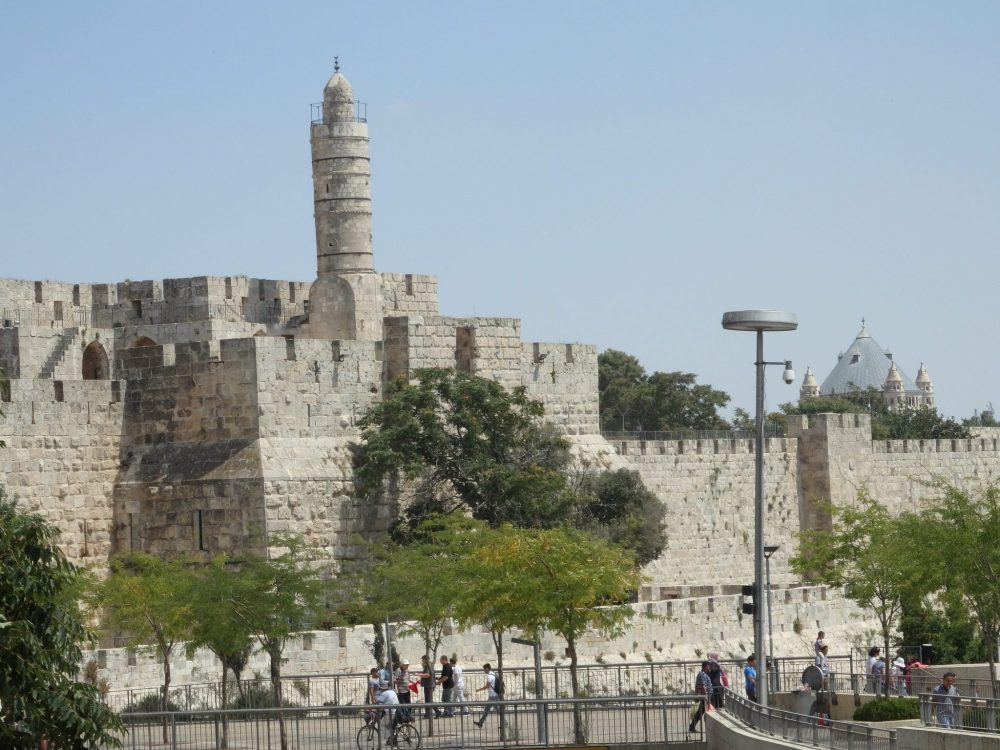
The first thing your tour guide will say is that this citadel has nothing to do with King David from the Bible. Some earlier tour guide decided to call it the Tower of David, and the name stuck. Apparently, Christians in the Holy Land during the Byzantine period, about the 5th century CE, believed – mistakenly, it turned out – that King David’s palace had been here.
(If you want to see what probably was King David’s palace, go to the City of David, just down the hill from Jerusalem Old City.)
Visit the Tower of David for the history
While archeological evidence shows that a structure was here much earlier, King Herod – so now we’re at the New Testament, not the Old – was the one who built this fortress. Mostly destroyed by the Romans in 70 CE, it was rebuilt by the Arabs after they conquered the city in 638 CE.
The Crusaders took it from the Arabs in 1099, then in turn lost it to the Mamluks, who destroyed it, but then, in 1310, rebuilt it.
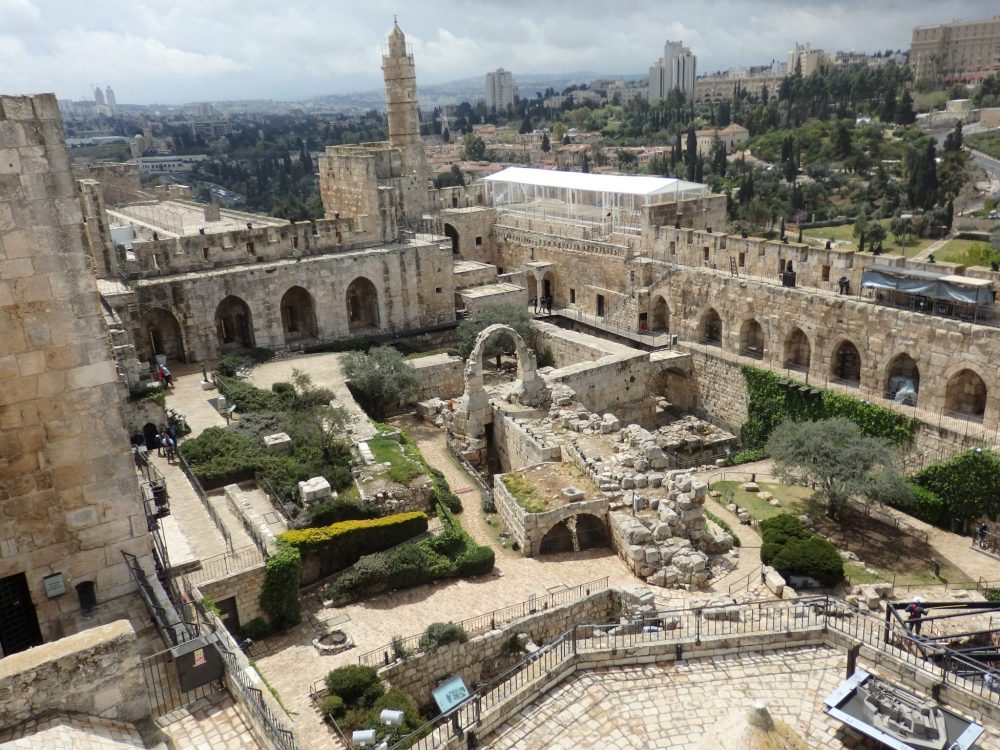
So the crenellated towers present today stem from the Mamluk period (13th – 16th centuries), with later additions from the Ottoman period in the 1500s.
See the Tower of David first!
Are you confused yet?
Generally, when people explore Jerusalem for the first time, their instinct – a sort of irresistible force – draws them into the Old City. More specifically, it draws them to the spiritual centers, which are all quite close together: the Church of the Holy Sepulchre for Christians, the Western Wall for Jews, and the Dome of the Rock for Muslims.
Generally speaking, tourists enter through the Jaffa Gate. Rather than visit the Tower of David, they pass right by it, plunging into the narrow market streets, winding downhill to the wide plaza that is bordered by the Western Wall, with the Dome of the Rock towering above.
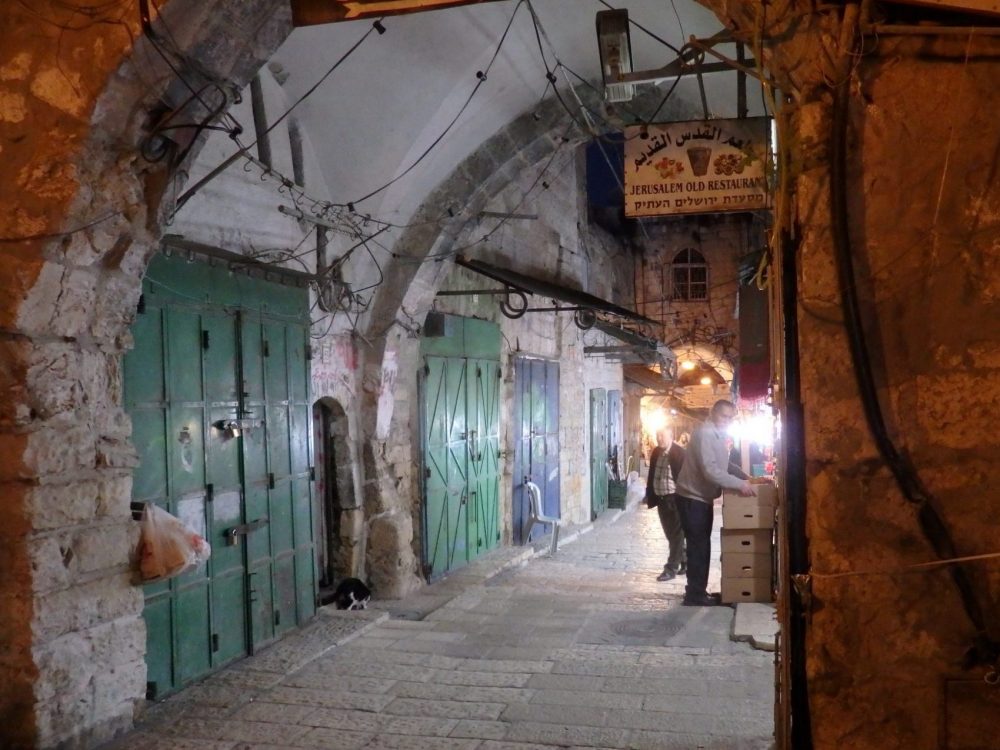
Nevertheless, my advice would be to resist that pull long enough to visit the Tower of David, right inside the Jaffa Gate.
Inside, follow the signs from room to room and discover the story told there. It is the story of Jerusalem’s history as a whole, and it’ll serve you well throughout your trip. Jerusalem has a long, complicated history of a series of conquests. Having a general knowledge of that history will make the rest of your Jerusalem sightseeing clearer.
Not only that, knowing the history will help you understand much of what you see pretty much anywhere you go in Israel as a whole.
- Turn a corner and come upon a row of Roman columns? That’s because the Romans ruled over Jerusalem from 37 BCE to the 7th century CE.
- Wondering why the Jews consider the Western Wall a holy place? That’s because it was the retaining wall for the Second Temple that stood on the hill above. The Romans destroyed the temple in 70 CE, but Jews still see the location as holy.
- Notice, as I did one day, a storefront somewhere in the Arab quarter of the Old City that is being refurbished? Those arches and pillars look very medieval, don’t they, much like castles you’ve seen in Europe? That’s because they probably date from the Crusader or early Ottoman period.
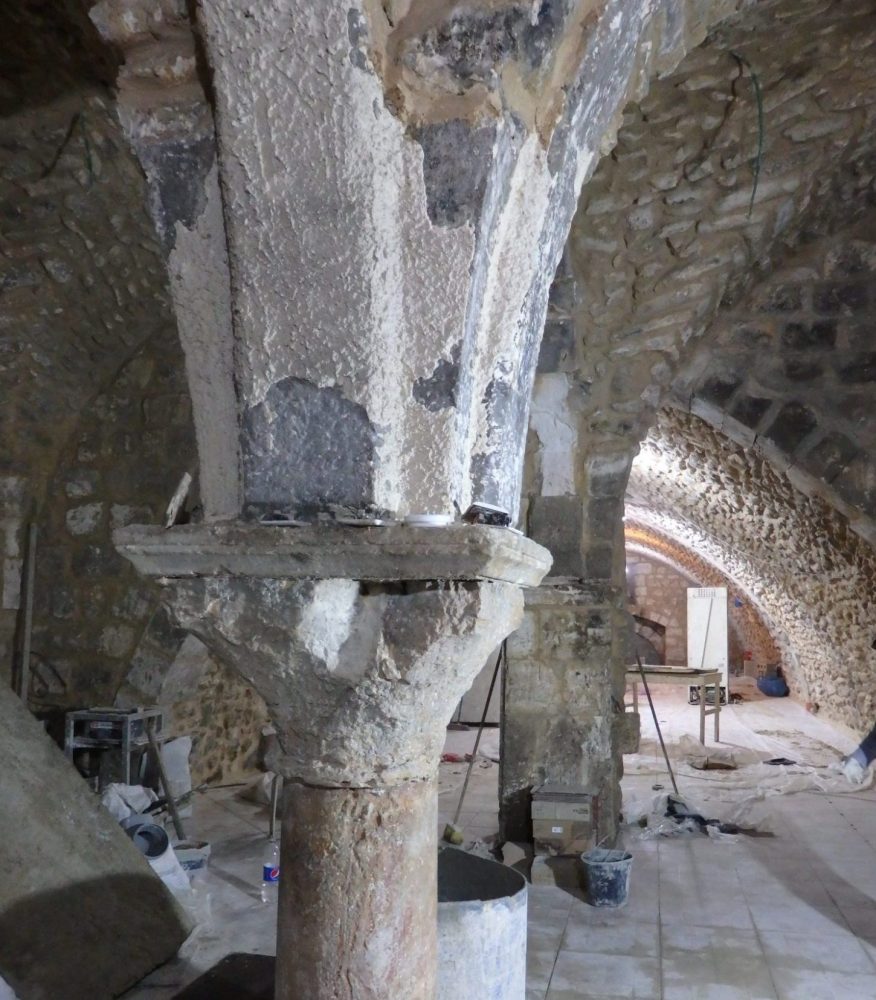
Another place to learn the history behind the Bible stories is the Bible Lands Museum.
The Tower of David Night Spectacular
Once you have an overview of the history of this complicated city, stay for the “Tower of David Night Spectacular.” Essentially a sound and light show, it is particularly well-produced. Sitting outdoors in the open within the Tower of David, spectators watch projections onto the ancient walls.
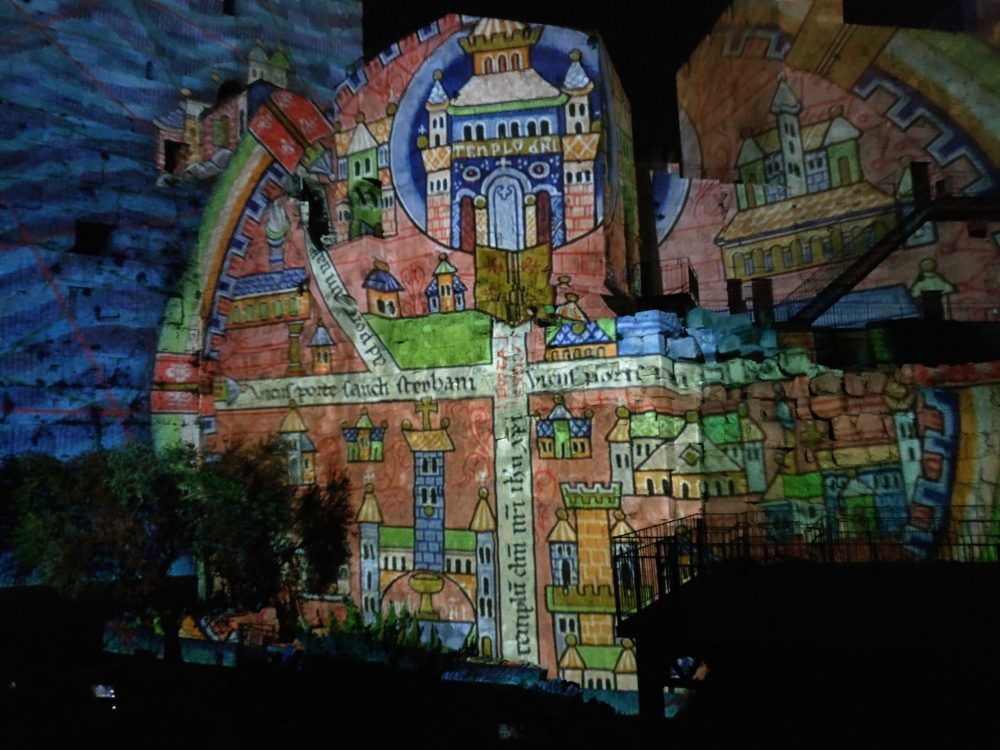
While the images are in a range of styles, the artistry in all of them is wonderful. They cover the walls for about 180 degrees around the spectators. I found myself, as I watched, desperately swiveling my head from side to side to capture them all.
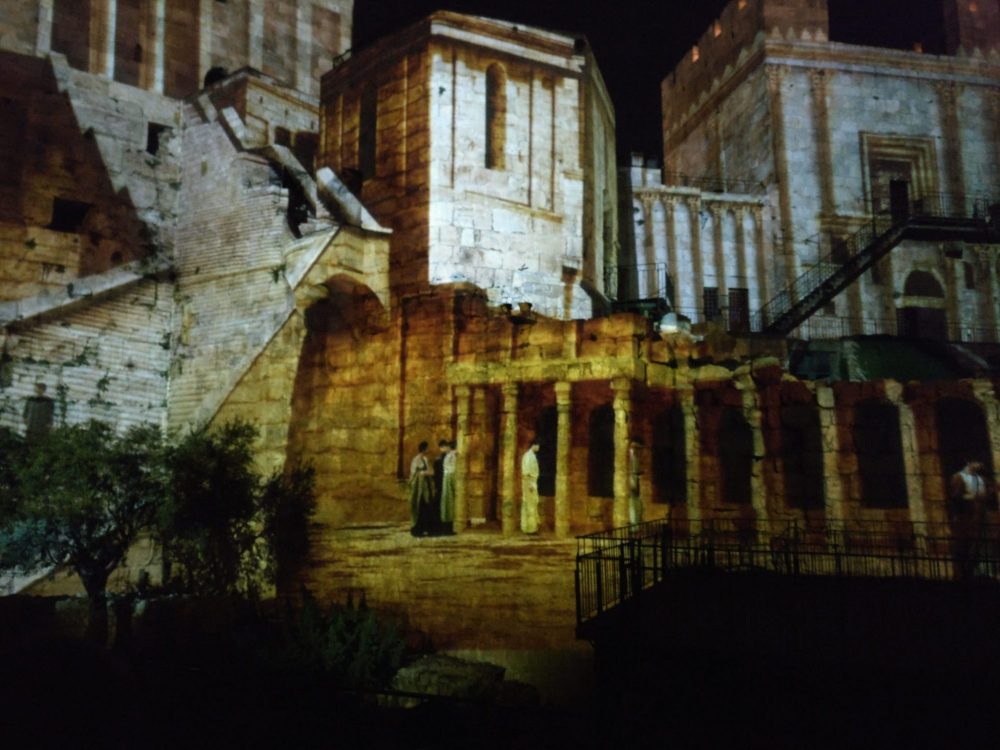
The designers’ decision to tell the story of the Tower of David, and by extension the city itself, works well because they don’t really tell it. What I mean is that there is no narration, no cheesy invented story. Instead, the history is told in a series of moving and still images, with appropriate, pleasing background music.
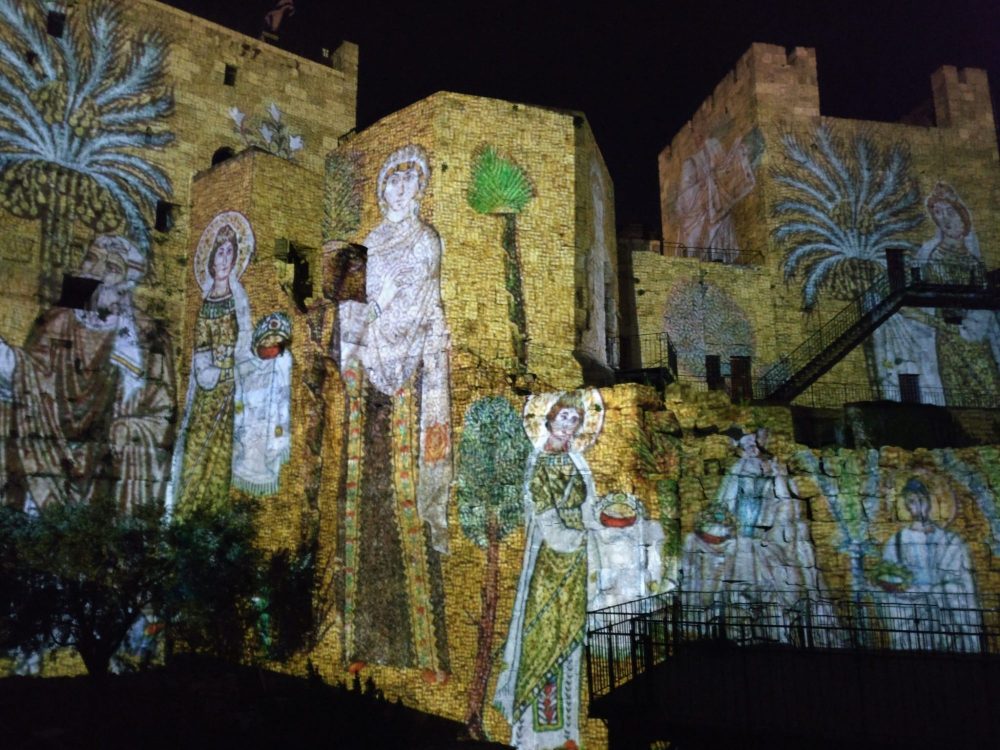
You won’t learn much by going to the Tower of David Night Spectacular. Think of it instead as an illustration – remarkably masterful – of what you’ve learned in the more traditional museum inside.
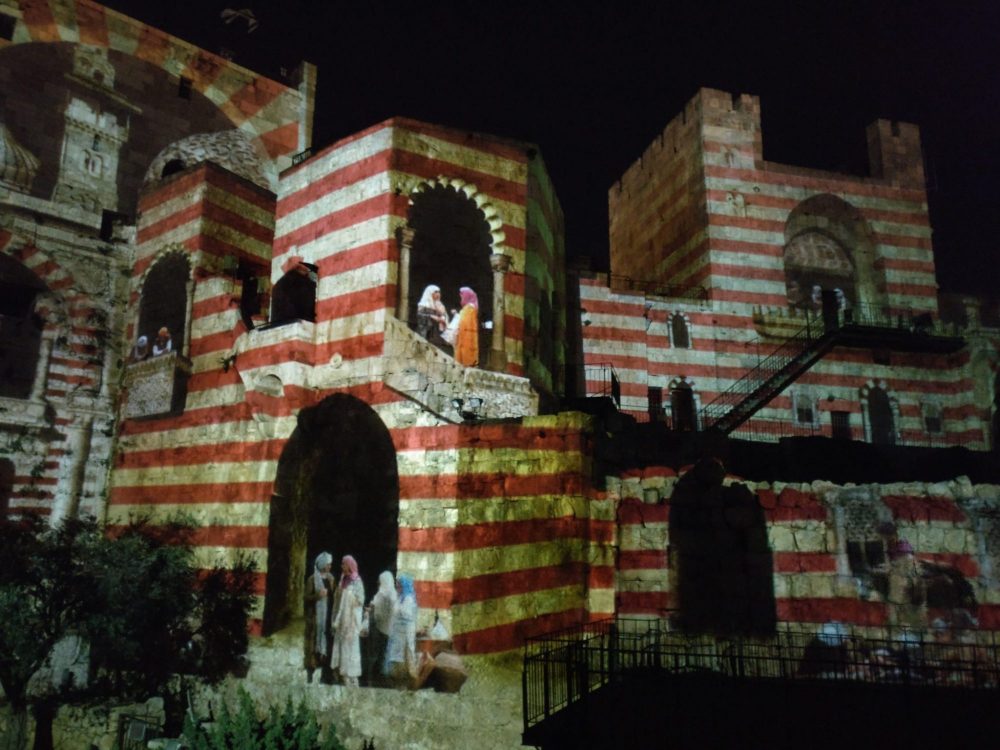
(Added in March 2018: As of April 1, 2018, the Tower of David Museum will offer a second light show along with the Night Spectacular. The new one centers on King David himself, and promises to be equally enchanting.)
What to do after you visit the Tower of David
Now that you have a general idea of the history, continue your sightseeing. If the oldest period interests you, check out the City of David nearby.
Explore the Old City’s three spiritual centers: the Western Wall, the Dome of the Rock and the Church of the Holy Sepulchre. Get lost in the Muslim Quarter’s market streets. Wander among the Orthodox Jews in the Jewish Quarter. Walk the Via Dolorosa with Christian pilgrims singing hymns.
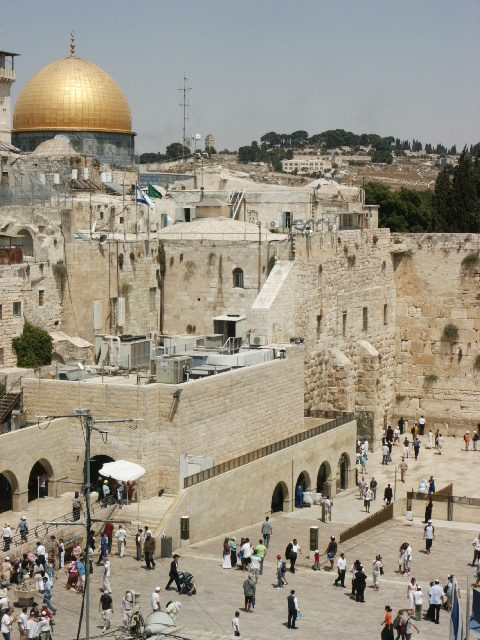
Allow the pull of the Old City to take hold, and you’ll see what happens: it’ll steal your heart.
Disclosure: I received complementary admission to the museum and the Tower of David Night Spectacular. All opinions, however, are my own.
Visitors Information
Tower of David Museum: Just inside the Jaffa Gate in the Old City of Jerusalem. Open Saturday-Thursday 9-16:00 and Friday 9-14:00. Admission to the museum: 40NIS (€9 or $11.50), 55NIS (€12.60 or $16) if combined with the Night Spectacular, 80NIS (€18 or $23) if combined with the King David show. Additional charges for various add-ons such as guided tours and special exhibitions. Book tickets on the website ahead of time for the night shows. Dress warmly for either night show; Jerusalem can get quite cold at night.



Ah, you have snapped amazing shots of the Night Spectacular show, Rachel! Fantastic job!
The best light and sound show I have seen 🙂
Me too, I think! I remember really enjoying the one at Blois chateau in France too.
Amazing post, Rachel. I don’t believe I’ve previously read about the Tower of David. It looks incredible–especially the night shots!
Interesting post – it makes me want to visit and, especially, see the light show.
One tour guide told us it was called the Tower of David because they couldn’t call it the Tower of Herod (on account of him being so unpopular)!
That makes sense!
Thanks for this eye-opener. I haven’t made it to Jerusalem but, when I do, I will surely follow your advice and take in the whole of it, including the Tower of David!
I agree that it is a good idea to visit the Tower of David in Jerusalem for some general history, which I did do also on my first visit. On my second trip, I visited the City of David, which for some reason I find more memorable.
I visited the City of David on this trip too. It gives you the oldest segment of the history. The Tower of David is good for the general history.